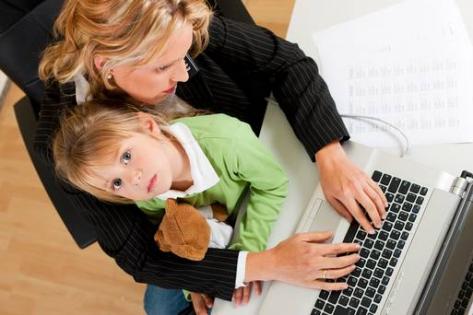More than half a million or one in four Australian households now have a female as their major breadwinner – 140,000 more households than 10 years ago, according to the latest AMP.NATSEM Income and Wealth Report, Modern Family.
The report analyses data from a variety of sources spanning from 2001 to 2011. The report also found that:
- the proportion of families with both parents working has risen dramatically, with 58% of all ‘couple with children’ families having both parents in the workforce, compared with 40% in the 1980s
- Australians are more likely to swap house keys than wedding rings with 78% of people living together before marriage, up from 72% 10 years ago, and a drop in the nation’s annual marriage rate from 6.6 marriages per 1,000 people to 5.5 in the past decade.
According to the report, the number of blended and step-families has doubled in recent decades, together making up almost 11% of Australian families with dependent children, compared with 6.8% in 1986.While blended and step-families are on the increase, divorce rates in Australia have stabilised at 2.2 divorces per 1,000 people and marriages are lasting longer – on average 12 years, up from 10 years in 1991.
The report finds more than half of all Australians support equal rights for same-sex couples in relation to marriage and children, an increase of 14% in five years. A belief in equality for all extends across the generations, with 42% of Baby Boomers and three in 10 older Australians supporting equal rights for same-sex couples.
The number of same-sex couples has increased 72% in 10 years from 19,594 in 2001 to 33,714 in 2011, with most of this growth coming from non-metropolitan areas. This significant increase is likely to be driven by same-sex couples being more comfortable about disclosing their relationship.
AMP Chief Customer Officer Paul Sainsbury said today’s modern family is almost unrecognisable from the mum, dad and a couple of children households of past decades.
“Today’s modern family is complex and diverse. Living alongside more traditional families are blended and step-families, single parent families, de facto couples and same-sex families,” Mr Sainsbury said.
“The report shows the divorce rate has stabilised, and divorces involving children have actually declined, perhaps because Australians are getting married later.
“The cost of raising children, financial stress from divorce or coping in challenging economic times can have a significant impact on family stability, so it’s important that Australian families have their finances in order before challenges crop up,” Mr Sainsbury added.
NATSEM Principal Research Fellow Rebecca Cassells, and lead author of the report, said family life has changed significantly over the decades.
“Today’s modern family usually starts with a couple living together before marriage, perhaps deciding to delay having children, and when they do start a family, while it’s more common for women to be the primary carer, most mothers will quickly return to work, at least part-time,” Ms Cassells said.
“Given the enormous changes that have occurred over the past century, we can only begin to imagine how families will evolve in coming years,” said Ms Cassells.
Other key report findings
1. There are more female breadwinners than ever before
- One in four or 521,000 Australian ‘dual-earner’ families now have a female as their major breadwinner, up from 22% or 385,000 families 10 years ago.
2. Families on lower incomes are more reliant on female breadwinners
- About 27% of dual-earner families with low household earnings and 25% of middle income dual-earner families have a female breadwinner. Only 17% of high income families have a female breadwinner.
- Tasmania has the most female breadwinners at 35%of all dual-earner households and WA has the lowest proportion at just 18%.
3. Women come to the rescue when times get tough
- The number of female breadwinners rose across all income levels during the recent global financial crisis, from 22% to 24%.
4. Australian first-time mums are approaching 30
- First time mothers are on average 29 years old, compared to 30 years ago when they were just over 25 years of age.
- Almost one in four babies are born to mums aged 35 or over
5. Australia’s fertility rate is below the population replacement level but trending up
- The fertility rate for Australian women has increased from 1.8 births per 1,000 women in 2001 to 1.9 births in 2011, but this is still below the replacement level of 2.1.
6. Blended and step-families are financially worse off
- The average weekly wage for blended and step-families is $195 less than intact families – $1,878 compared to $2,073.
7. Inner Sydney is the number one location for same-sex couples
- 10% of male same-sex couples live in the inner Sydney suburbs of Darlinghurst, Potts Point and Surry Hills and overall make up around 18% of all couples in each of those suburbs.
- The 10 suburbs with the highest percentage of female same-sex couples are all in Sydney’s inner west.
- Outside Sydney, the Melbourne suburb of Collingwood has the highest proportion of male same-sex couples and the Victorian town of Daylesford has the highest proportion of female same-sex couples.


















__small.png)










